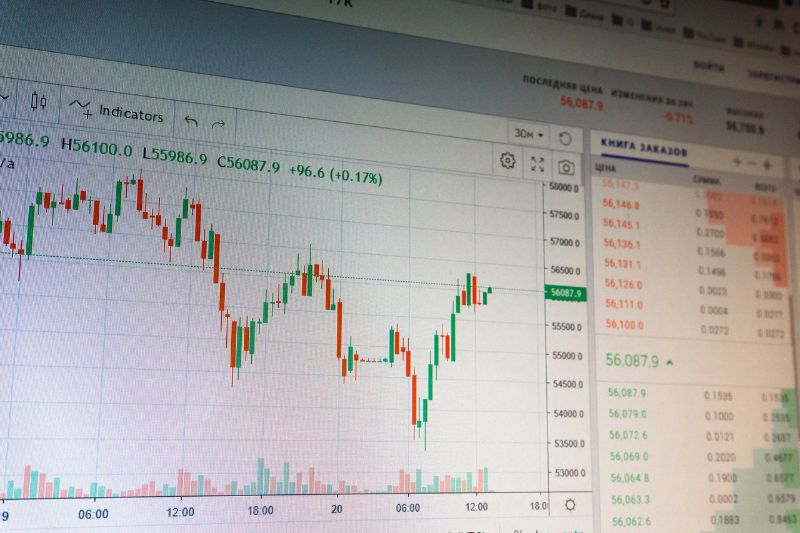A company’s preferred stock has been purchased by Urusula. A preferred dividend of 8% of the par value of her shares will be paid to her, as stated in the prospectus. Each share has a par value of $100. 1000 preferred stocks have been purchased by Urusual. Every year, how much money will she be getting in dividends?
We’ve already provided the two most essential inputs needed to figure out how much a dividend is worth. We are aware of the dividend yield and the value at which each share is valued.
- Par value x dividend rate x number of preferred stocks = preferred dividend formula
Where do you find preferred dividends on financial statements?
On these financial statements, the dividends paid and declared by a corporation in the most recent year will be included:
- under the subject of finance activities, the cash flow statement
Current liabilities include dividends that have been declared but have not yet been paid.
Because they are not considered expenses, dividends on common stock are not included in the income statement. However, dividends paid on preferred stock will be subtracted from net income in order to show the earnings available for common stock in the company’s income statement.
Key Points
- First come, first served: preferred investors get a dividend per share that is higher than what is paid to common stockholders. This is the amount of money that preferred stockholders receive as compensation for their investment.
- The right to receive a dividend on noncumulative preferred shares expires if no dividend is declared. There is no obligation to pay a dividend that is withheld or not paid in any year when noncumulative preferred stock is issued.
- It is common for preferred stockholders to hold cumulative preferred stock, which means that if the dividend is not paid, the right to receive a basic dividend accrues. Prior to paying dividends on common shares, companies must first pay preferred dividends that have not been paid.
- The stockholders’ equity section of the balance sheet includes all preferred stock, and it is listed first before any other shares. You can see how many shares have been issued and how many have been repurchased for each form of stock.
Key Terms
- a dividend is a payment paid by a corporation to its shareholders in proportion to their share of the firm’s profits (eg, quarterly or annually).
- Ownership interest in a company or other entity with limited liability that is entitled to dividends, but with financial rights and obligations that are lower than those of preferred stockholders.
- Stock with a fixed dividend that is paid out of earnings before any dividend can be paid on common stock, and that has precedence over common stock in liquidation, is known as preferred stock.
- payments made to shareholders by a corporation that accumulate if a prior payment was missed
Where does preferred stock go on the balance sheet?
Companies have the option of issuing new capital stock or repurchasing shares that are already in the hands of shareholders. “Treasury” shares refer to previously issued stock that is repurchased by the corporation.
The maximum number of shares a company is allowed to issue by the board of directors is known as authorized stock. Common and preferred stock shares are available. As long as the total number of shares does not exceed the allowed quantity, a company can issue shares throughout time. Authorizing a big number of shares that can be issued in the future is an efficient strategy to minimize the legal fees associated with issuing a large number of shares at once.
There is a desire for preferred stock holders to receive dividends and to have their shares liquidated before those who possess common stock. The initial selling price per share, which is used to compute dividend payments, is not the same as the par value of preferred stock.
The number of outstanding preferred stock shares multiplied by the par value per share gives you the total par value. Preferred stock with $25 par value per share is valued at $25 million, assuming a corporation has 1 million shares.
What’s a preferred dividend?
- When a firm pays preferred shareholders a dividend in cash, this is referred to as a preferred dividend.
- For one thing, preferred stock pays more dividends than common stock of the same firm.
- It is necessary for a corporation to allocate funds for preferred dividends in arrears since it has declared all of its future dividend commitments in advance.
- Common dividends are not included until preferred dividends have been paid out of net income.
Are preferred dividends on income statement?
A financial statement known as an income statement is a sort of statement. An income statement includes a company’s sales, costs, profits and losses, and net profit. Profit after taxes, or net income, is a measure of a company’s overall performance for a given time period. Prior to deducting preferred stock dividends, this is the procedure.
Reported net income, at least as it currently appears, isn’t reliable. This is because preferred stock and preferred stock dividends are different. On a company’s income statement, dividends paid on common shares are not subtracted.
An income statement can be prepared by subtracting preferred stock dividend payments. Because preferred owners have a greater right to dividends than common stockholders, this is the reason. A “net income applicable to common” figure is a net income figure that includes dividends paid to preferred stockholders.
For the sake of argument, let’s pretend that a corporation generated $10,000,000 after taxes and paid $1,000,000 in preferred stock dividends. On the income statement, the net income relevant to common shareholders would be $9 million.
How do you calculate annual dividends on preferred stock?
Par value and dividend yield are two key features of a preferred stock. Preferred share dividends are solely calculated using their underlying stock’s par value, regardless of how much you paid for it. The annual dividend is calculated by multiplying the par value by the dividend rate. Using the previous example, if the par value of the preferred shares is $50 and the dividend yield is 6%, we can calculate that the preferred share pays a $3 annual dividend.
What is a preferred shareholder?
- To put it simply, preferred stock does not grant shareholders voting rights, whereas common stock does.
- Preferred shareholders receive dividends ahead of regular shareholders because they have priority over the company’s income.
- They’ll be paid out after creditors (bondholders), favored shareholders (stockholders), and bondholders (loans).
What companies have preferred stock?
The ultimate democratization of wealth is achieved by publicly held enterprises. Anybody, from the Sultan of Brunei to your local plumber, can buy as many shares of Cisco Systems, Inc. (CSCO), because all it takes is a few dollars to open an account with E*Trade Financial Corp. (ETFC).
Sometimes, a company wants to attract a specific type of investor; one that prefers regular, pre-determined payments. There are a number of ways to accomplish this goal, including issuing bonds. An issue of bonds by a corporation could be interpreted as a declaration of financial desperation, which could frighten away potential stock investors. Is there a way to assure investors monthly payments while still offering equity? Preferred stock, a hybrid of bonds and common stock, is the secret ingredient. What Is Preferred Stock, and Where Can I Find Out More?
Preferred stock and ordinary stock differ in only a few ways, but those differences are essential. The dividends paid to preferred shareholders are an important selling point for the security. Unlike with common stock, firms are not obligated to pay dividends to holders of preferred stock. What is the difference between preferred stock and common stock?
Companies that pay dividends on their common stock don’t issue preferred shares in practice. It’s rare for corporations who don’t pay dividends to pay dividends. Preferential stock has been dwindling in popularity. For every dollar of preferred stock in the United States, there is an estimated $80 worth of common stock in circulation. Apple Inc. (AAPL), Exxon Mobil Corp. (XOM), Microsoft Corp. (MSFT), and so on, do not sell preferred shares. Big Four banks – Wells Fargo, Bank of America and JPMorgan Chase & Co. – are the only American firms to sell preferred stock among the country’s 30 largest corporations by market capitalization (JPM). Preferred stock is issued by banks at a rate of 88 percent, according to research. As to why this is happening, it’s the result of the 2008-2009 financial crisis and the resulting bailouts. Banks require preferred stock more than oil businesses or semiconductor manufacturers do because it adds another asset to the balance sheet.
Is a company required to pay preferred dividends?
Because preferred stock is preferred to common stock, it is referred to as preferred stock. Prior to the distribution of dividends to common stockholders, preferred stockholders must get their dividends. Consequently, it is impossible for a corporation to pay a common stock dividend yet fail to make a preferred stock distribution at the same time. Preferential stockholders would also have an advantage over common stockholders in bankruptcy court if the company went bankrupt.
How do you calculate the number of preferred shares issued?
On the preferred stock prospectus, you can discover this information. As an example, consider that the preferred stock has a par value of $12. The preferred stock’s par value is multiplied by the number of preferred shares in issue. $100,000 x $12 = $1,200,000 in this case.
How do you calculate cost of preferred stock?
Priority shareholders demand a certain annual rate of return in return for their preferred stock. By dividing the annual preferred dividend payment by the preferred stock’s current market value, it is determined.
A preferred stock’s cash flow stream is usually a perpetuity because it has an indefinite life and pays a fixed dividend each time it’s issued. Essentially, a preferred stock’s worth is the present value of a long-term asset.
When calculating the weighted-average cost of capital, preferred stock is a significant factor (WACC).
Do Preferred stockholders receive dividends preference over common stockholders?
Priority is given to preferred investors over regular stockholders in dividend payments, which can be paid either monthly or quarterly. Preferred stockholders have fewer rights than common stockholders, including the inability to vote.







